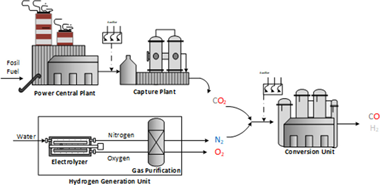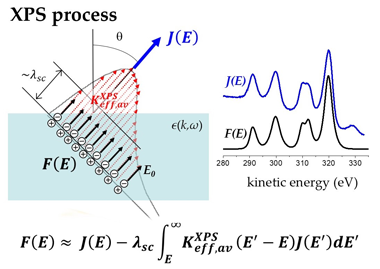Scientific Papers in SCI
2023
2023
Química de Superficies y Catálisis
Engineering morphologies of yttrium oxide supported nickel catalysts for hydrogen production
Zhang, RB; Tu, ZA; Meng, S; Feng, G; Lu, ZH; Yu, YZ; Reina, TR; Hu, FY; Chen, XH; Ye, RPRare Metals, 42 (2023) 176-188
Show abstract ▽
The catalytic performance is highly related to the catalyst structure. Herein, a series of Ni nanoparticles supported on Y2O3 with different morphologies were successfully synthesized via hydrothermal process screening different pH environments. These Ni/Y2O3 catalysts were applied to efficiently produce COx-free H-2 through ammonia decomposition. We identify a significant impact of Y2O3 supports on nickel nanoclusters sizes and dispersion. The experimental results show that Ni/Y11 catalyst achieves 100% ammonia decomposition conversion under a gas hour space velocity (GHSV) of 12,000 ml.h(-1).g(cat)(-1) and temperature of 650 degrees C. Such a high level of activity over Ni/Y11 catalyst was attributed to a large specific surface area, appropriate alkalinity, and small Ni nanoparticles diameter with high dispersion.
January, 2023 | DOI: 10.1007/s12598-022-02136-5
Materiales Avanzados
Sintering behaviour of a clay containing pyrophyllite, sericite and kaolinite as ceramic raw materials: Looking for the optimum firing conditions
Sanchez-Soto, PJ; Garzon, E; Perez-Villarejo, L; Eliche-Quesada, DBoletin de la Sociedad Española de Ceramica y Vidrio, 62 (2023) 26-39
Show abstract ▽
The sintering behaviour of a pyrophyllite clay has been investigated. The mineralogical composition by X-ray diffraction (XRD) of this sample was -35 wt.% pyrophyllite, -25 wt.% sericite/illite, -15 wt.% kaolinite and -20 wt.% quartz. The chemical composition was consistent with these results, with a total flux content of 4.18 wt.%. Prismatic bars were prepared by dry pressing using this sample and fired in the range 800-1500 degrees C with 0.5-5 h of soaking times. Sintering diagrams were obtained using the results of linear firing shrinkage, water absorption capacity, bulk density and apparent porosity determined in the ceramic bodies as a function of firing temperatures. It was found a trend of slight variations of bulk density values firing in the range 1000-1150 degrees C, with marked decreases of these values for these bodies fired at 1200 degrees C and 1300 degrees C. The temperature of maximum bulk density was determined as -1200 degrees C and the vitrification temperature was -1300 degrees C where the apparent porosity becomes almost zero. The vitrification process of the pyrophyllite clay sample was investigated using a method previously described in the literature, which considered an Arrhenius approach under isothermal conditions and a first order kinetic. It was determined an activation energy (Ea) of -45 kJ/mol with a linear correlation coefficient of 0.998. The relative rates of vitrification were calculated. It was found that the contribution of vitrification due to the heating was relatively small compared to the vitrification during soaking. Mullite and quartz are forming the ceramic bodies besides a vitreous or glassy phase. The thermally treated pyrophyllite clay showed a dense network of rod-shaped and elongated needle-like crystals, being characteristic features of mullite as a dense felt. The vitrification rate equation, as deduced in this study by first time, can be a useful tool to estimate the optimum firing conditions of the pyrophyllite clays applied as ceramic raw materials.
January, 2023 | DOI: 10.1016/j.bsecv.2021.09.001
Química de Superficies y Catálisis
Is the RWGS a viable route for CO2 conversion to added value products? A techno-economic study to understand the optimal RWGS conditions
Portillo, E; Gandara-Loe, J; Reina, TR; Pastor-Perez, LScience of the Total Environment, 857 (2023) 159394
Show abstract ▽

Understanding the viability of the RWGS from a thermodynamic and techno-economic angle opens new horizons within CO2 conversion technologies. Unfortunately, profitability studies of this technology are scarce in literature and mainly focused on overall conversion and selectivity trends with tangential remarks on energy demands and pro-cess costs. To address this research gap, herein we present a comprehensive techno-economic study of the RWGS reac-tion when coupling with Fischer-Tropsch synthesis is envisaged to produced fuels and chemicals using CO2 as building block. We showcase a remarkable impact of operating conditions in the final syngas product and both CAPEX and OPEX. From a capital investment perspective, optimal situations involve RWGS unit running at low temperatures and high pressures as evidenced by our results. However, from the running cost angle, operating at 4 bar is the most favorable alternative within the studied scenarios. Our findings showcase that, no matter the selected temperature the RWGS unit should be preferentially run at intermediate pressures. Ultimately, our work maps out multiple operat-ing scenarios in terms of energy demand and process cost serving as guideline to set optimal reaction conditions to un-lock the potential of the RWGS for chemical CO2 recycling.
January, 2023 | DOI: 10.1016/j.scitotenv.2022.159394
Nanotecnología en Superficies y Plasma
Determination of the Primary Excitation Spectra in XPS and AES
Pauly, N; Yubero, F; Tougaard, SNanomaterials, 13 (2023) 339
Show abstract ▽

This paper reviews a procedure that allows for extracting primary photoelectron or Auger electron emissions from homogeneous isotropic samples. It is based on a quantitative dielectric description of the energy losses of swift electrons travelling nearby surfaces in presence of stationary positive charges. The theory behind the modeling of the electron energy losses, implemented in a freely available QUEELS-XPS software package, takes into account intrinsic and extrinsic effects affecting the electron transport. The procedure allows for interpretation of shake-up and multiplet structures on a quantitative basis. We outline the basic theory behind it and illustrate its capabilities with several case examples. Thus, we report on the angular dependence of the intrinsic and extrinsic Al 2s photoelectron emission from aluminum, the shake-up structure of the Ag 3d, Cu 2p, and Ce 3d photoelectron emission from silver, CuO and CeO2, respectively, and the quantification of the two-hole final states contributing to the L3M45M45 Auger electron emission of copper. These examples illustrate the procedure, that can be applied to any homogeneous isotropic material.
January, 2023 | DOI: 10.3390/nano13020339
Reactividad de Sólidos
Low Temperature Magnetic Transition of BiFeO3 Ceramics Sintered by Electric Field-Assisted Methods: Flash and Spark Plasma Sintering
Manchon-Gordon, AF; Perejon, A; Gil-Gonzalez, E; Kowalczyk, M; Sanchez-Jimenez, PE; Perez-Maqueda, LAMaterials, 16 (2023) 189
Show abstract ▽
Low temperature magnetic properties of BiFeO3 powders sintered by flash and spark plasma sintering were studied. An anomaly observed in the magnetic measurements at 250 K proves the clear existence of a phase transition. This transformation, which becomes less well-defined as the grain sizes are reduced to nanometer scale, was described with regard to a magneto-elastic coupling. Furthermore, the samples exhibited enhanced ferromagnetic properties as compared with those of a pellet prepared by the conventional solid-state technique, with both a higher coercivity field and remnant magnetization, reaching a maximum value of 1.17 kOe and 8.5 10(-3) emu/g, respectively, for the specimen sintered by flash sintering, which possesses the smallest grains. The specimens also show more significant exchange bias, from 22 to 177 Oe for the specimen prepared by the solid-state method and flash sintering technique, respectively. The observed increase in this parameter is explained in terms of a stronger exchange interaction between ferromagnetic and antiferromagnetic grains in the case of the pellet sintered by flash sintering.
January, 2023 | DOI: 10.3390/ma16010189
- ‹ previous
- 35 of 410
- next ›














